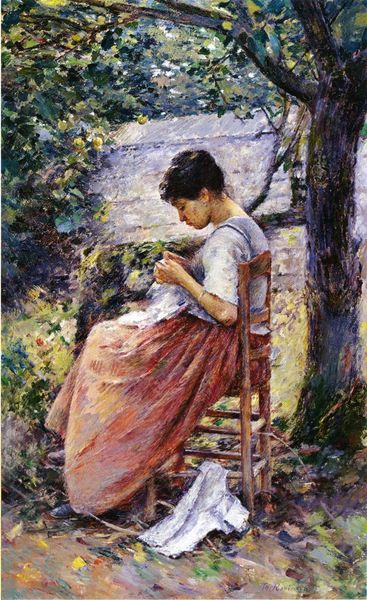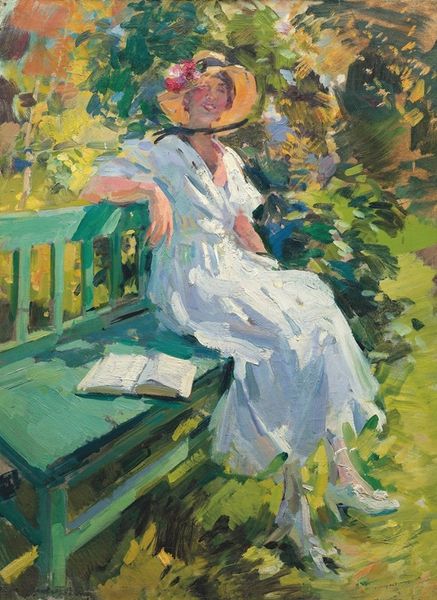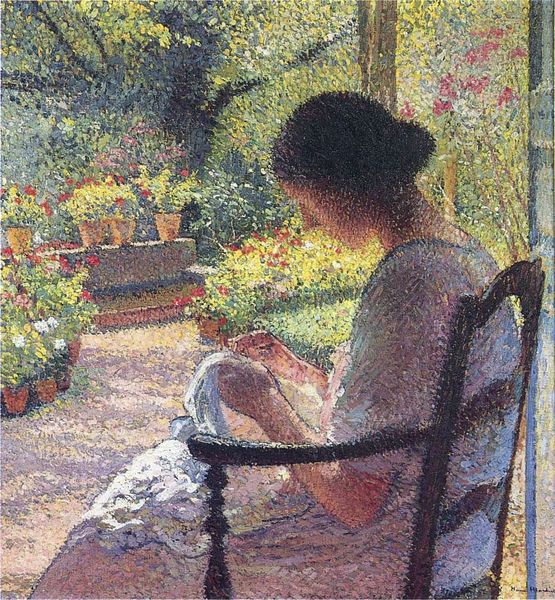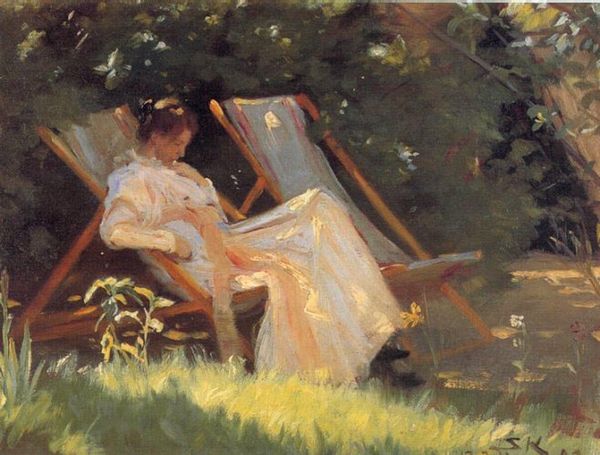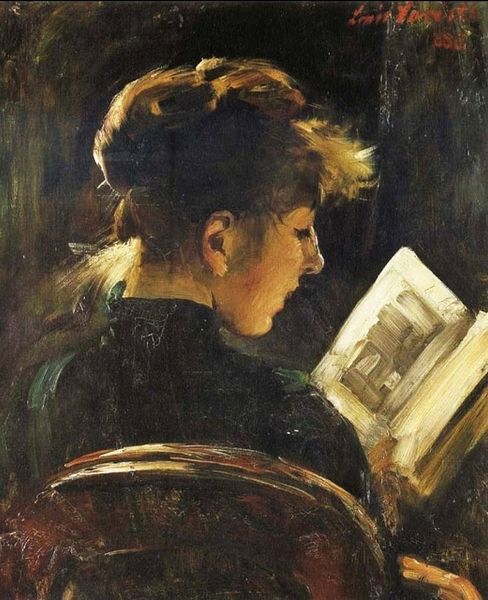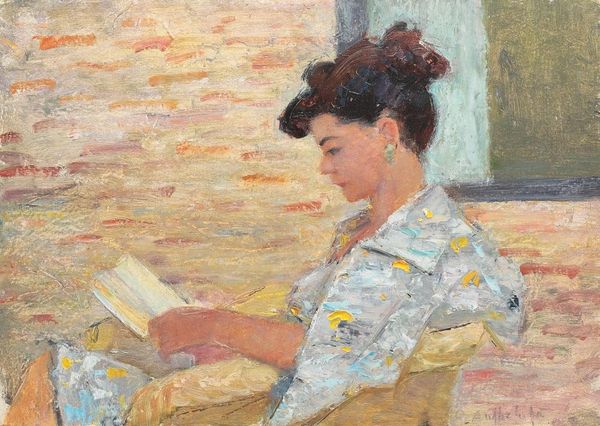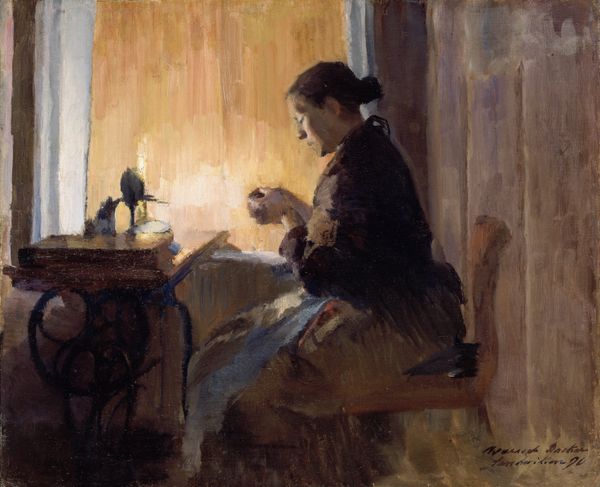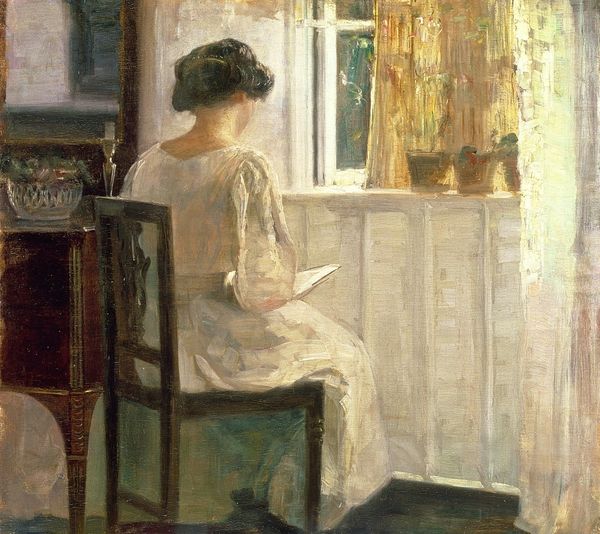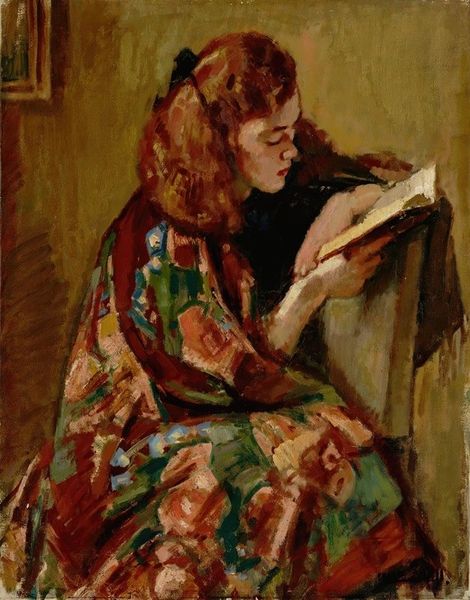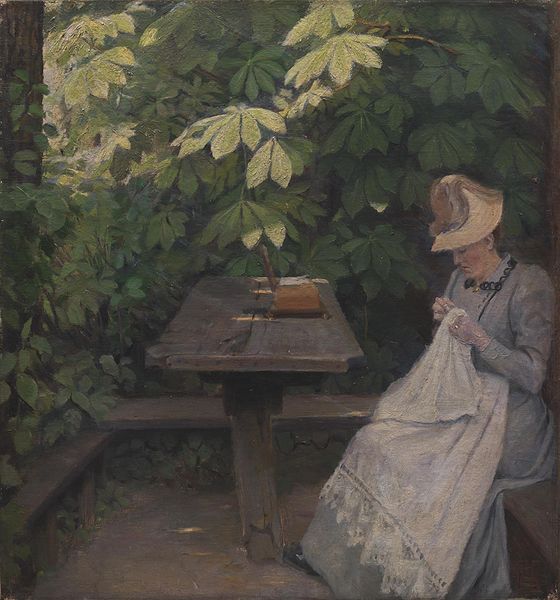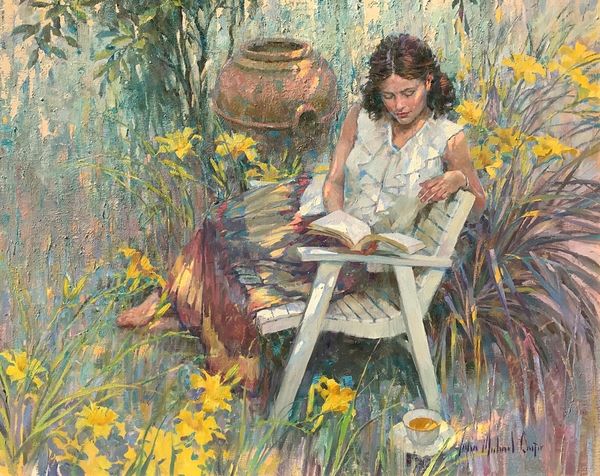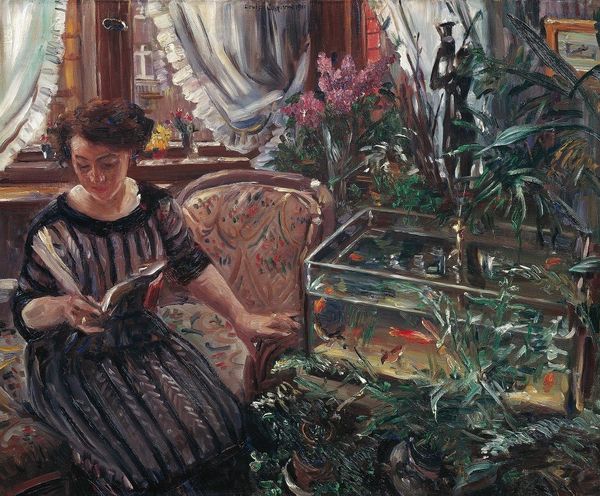
Copyright: Public domain
Curator: What a soothing, enveloping image! It feels like a warm, lazy day. Editor: Indeed. We're looking at Ipolit Strâmbu’s oil on canvas, “Summer Afternoon,” painted in 1918. Strâmbu, as you can see, clearly worked ‘en plein air’. Curator: The composition is cleverly constructed around contrasts. The woman, the clear focal point, is draped in a richly patterned, dark kimono which is juxtaposed with the sun-dappled, translucent leaves. It’s almost a study in light and shadow. But how much was Ipolit preoccupied with what a woman of her social standing had access to in those times? What types of material, magazines or books was she likely reading and consuming? Editor: You are correct in that this is highly concerned with access and labour as he represents what that women consumes for information and where. While the soft brushstrokes and broken colour are hallmarks of Impressionism. Structurally, the fence divides the composition adding a formal vertical thrust, it is almost constricting to me.. Curator: I read it as a compositional anchor. Look at how he mirrors the verticality with the woman's figure, creating a stabilizing force amid the dappled light. Though, considering the post-war social and political climate, might this intimacy represent an intentional return to simpler pleasures, reflecting a need to reconnect with nature and domesticity, when industry and society are shifting towards a modern identity? Editor: I am more concerned about its construction than symbolic interpretation; I mean that’s quite a formal leap there, the fence. What I am focused on is the formal structure! Even the textures contrast so elegantly: the smooth skin, the rough bark of the trees and fence, and then the flowing fabrics, these are compositional features with the central figure holding everything in order. The formal structure indicates much! Curator: That's an interesting perspective. Focusing on how the means of production creates the value within the painting and that he painted 'en plein air', really solidifies the art from life. Though, to conclude our remarks here; the dialogue between figure and landscape does seem to carry emotional weight beyond the merely pictorial. It encourages an appreciation of everyday life. Editor: I concur on that point, at least: Strâmbu offers us, through careful deployment of brushwork and colour, a timeless contemplation. The artist’s structural construction, even without factoring the labour to create it, presents to us an exquisite snapshot of still simplicity that stands apart from the commonality of its construction..
Comments
No comments
Be the first to comment and join the conversation on the ultimate creative platform.
